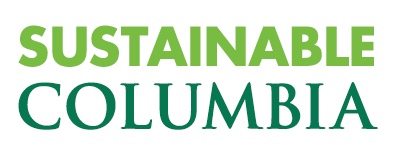Columbia Again Achieves 100% Renewable Electricity in 2019
Columbia University has again taken action to enable its strategy for clean, renewable energy by purchasing renewable energy certificates (RECs) to offset greenhouse gas emissions from 100 percent of its 2019 electricity consumption at the Morningside, Manhattanville, Irving Medical Center, Lamont-Doherty Earth Observatory, Nevis, and Baker Athletics Complex campuses. The acquired RECs are certified by the industry-leading verification program Green-e Energy and represent an equivalent number of megawatt hours (MWh) of renewable zero emissions electricity.
“With the acquisition of these RECs to supplement our other clean energy initiatives again in 2019, Columbia has met its commitment to address 100 percent of its Scope 2 emissions from purchased electricity,” said Jessica Prata, Assistant Vice President for the Office of Sustainability. “From here forward, we’ll continue to chart a thoughtful course that leads us to carbon neutrality for Columbia operations.”
Columbia’s acquisition of 2019 RECs complement the ongoing procurement of zero emissions power from hydroelectric projects administered by the New York Power Authority, and investments in two New York solar projects that provide half of the annual electricity required by the Lamont-Doherty Earth Observatory campus. With these and other combined actions, Columbia has exceeded its goal of cutting carbon emissions by at least 35 percent by 2020.
Similar to Columbia’s REC purchase a year ago, the 2019 REC purchase is sourced from two wind farms in Oklahoma. For 2019, the specified projects are the Goodwell and Origin wind farms. The 200 megawatt (MW) Goodwell project, located in Texas County, Oklahoma, entered commercial service in 2015. The 150 MW Origin wind project in Murray County, Oklahoma begin service in 2014. Goodwell and Origin will respectively contribute 73 percent and 27 percent of Columbia’s purchase of 277,892 RECs. Both projects inject wind energy into the Southwest Power Pool (SPP) balancing authority area, whose Environmental Protection Agency (EPA) region eGRID emissions data has nearly doubled the CO2e emissions rate in pounds per MW-hour (1,172) of the Westchester/New York City region (598).
“While we leverage RECs in the near term, we are actively pursuing strategies to enhance Columbia’s long-term clean energy commitment,” said David Greenberg, Executive Vice President for University Facilities and Operations. “Our planning process for 2050 will continue to support our leadership in sustainable operations as well as the University’s broader sustainability commitments, aligned with governmental emissions reduction goals. As technology options emerge to reduce and re-profile our energy requirements on a large scale, Columbia will be ready.”
